Chandler-Tuttle-Farwell Family
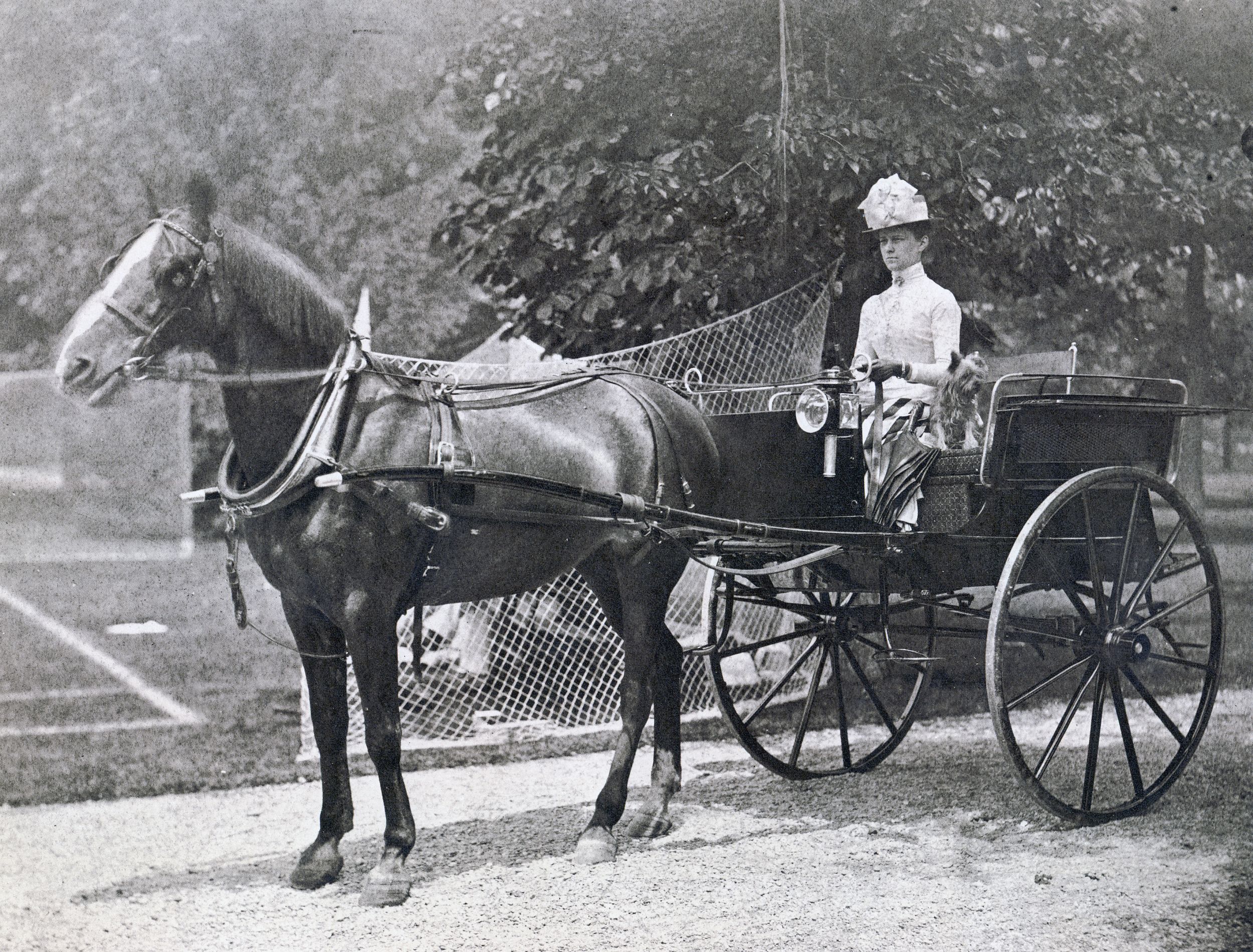
Fannie Farwell Tuttle with dog Vicki
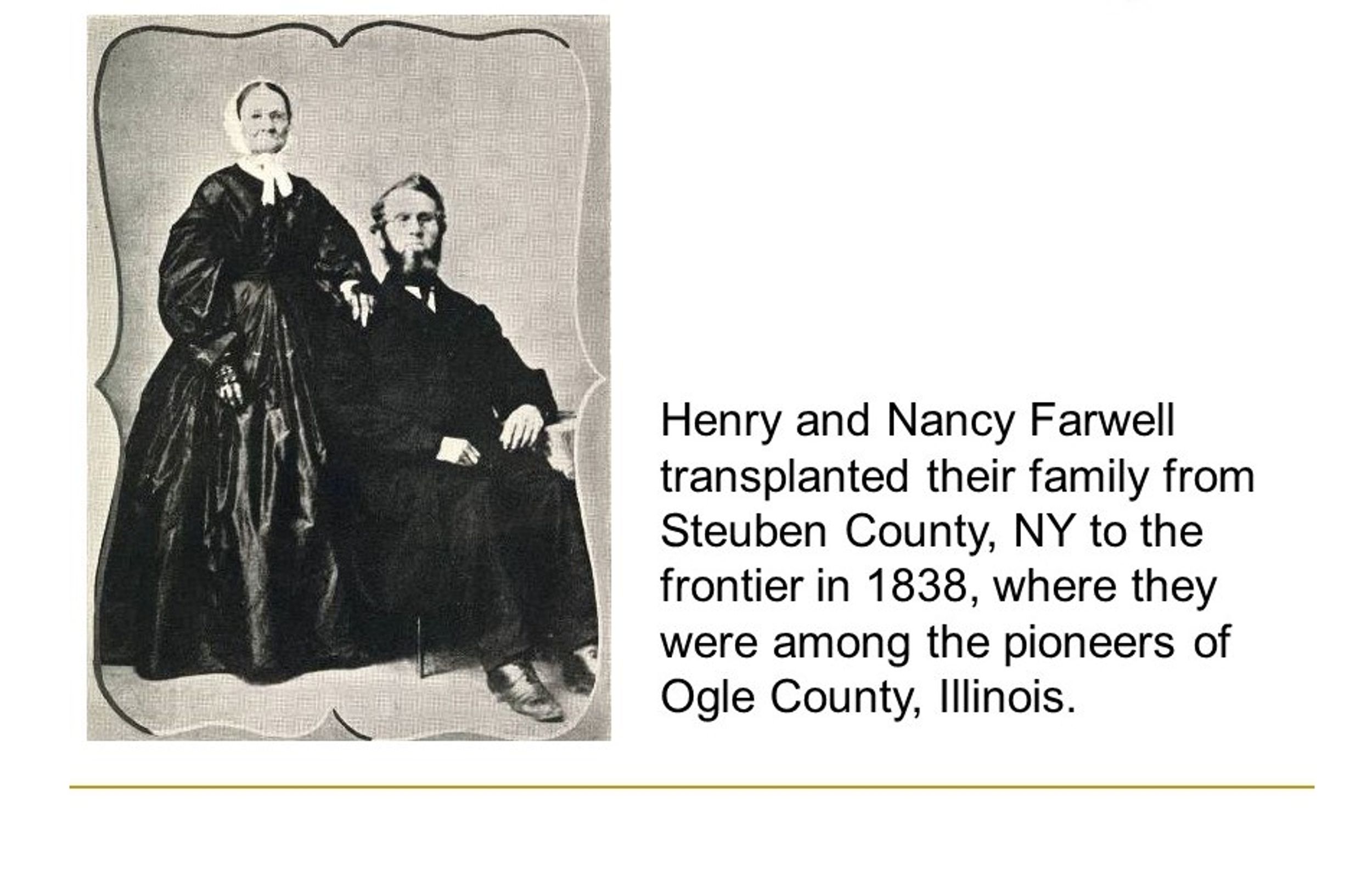
The roots of the Farwell family in Lake Forest are deep, and the family tree has many branches. Tracing the Farwells back in Illinois, the logical beginning of the story is with Henry and Nancy Farwell, pioneering settlers from New York in the 1830s. They were of strict Presbyterian stock, leading to a family legend which held that when two Farwell brothers were chopping wood on a Sunday, one cut off the tip of a finger, a mishap that was seen amongst family elders not justas an accident, but as proper penance for breaking the Sabbath.
Their first home in western Illinois was a log cabin of 14 square feet. According to family memoirs, the boys of the family, included young sons John V. and Charles B. Farwell, built a new home of brick and stone, not only making their own brick and cutting their own stone, but also creating the wagon used to carry the materials.
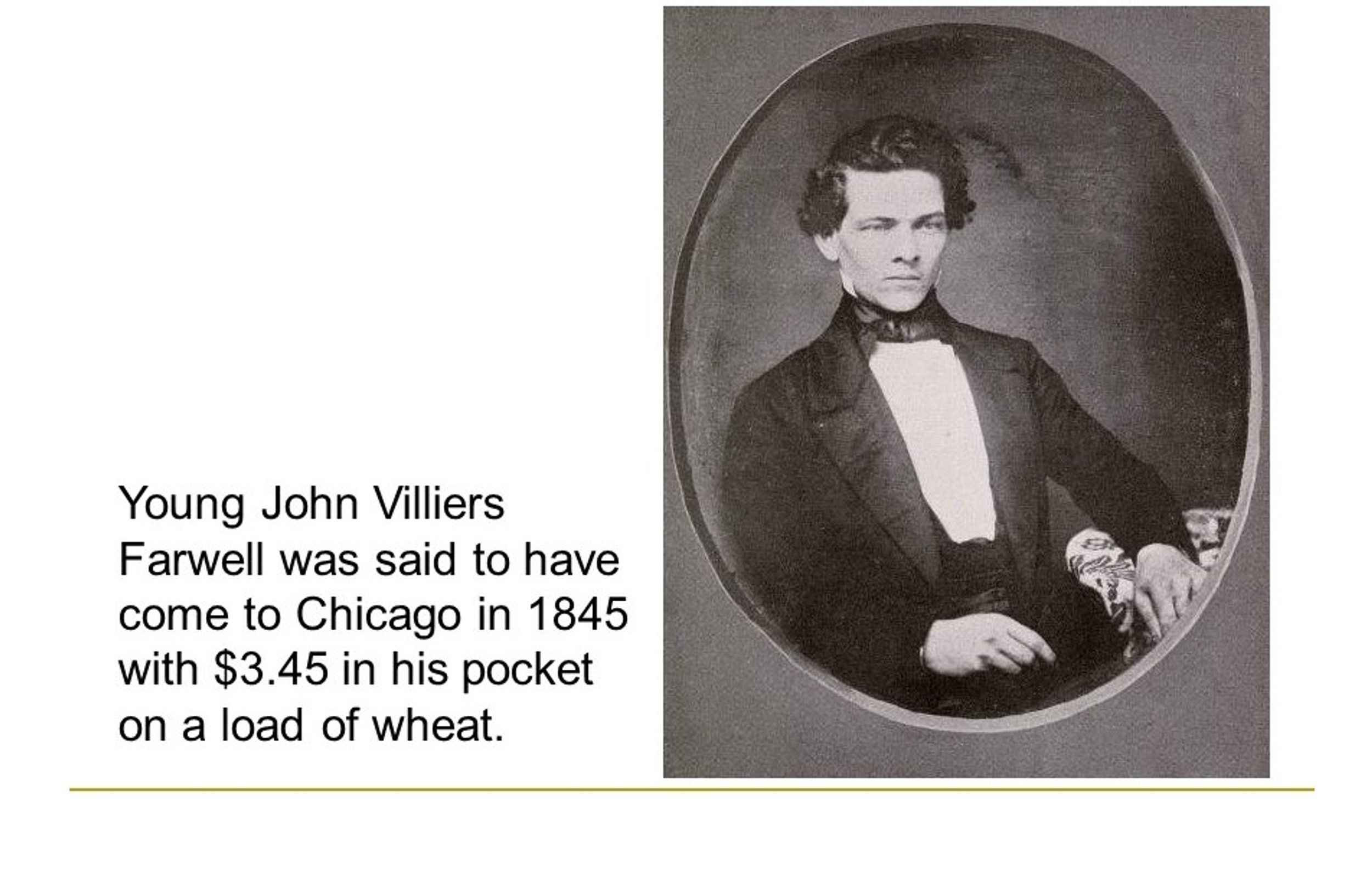
John V. Farwell made his way to Chicago in 1845 with very little capital; according to one account he arrived on a load of wheat with $3.45 in his pocket. His first employment was in the City Clerk’s office at $12 a month, earning $2 extra for each meeting of the city council he reported. Apparently some of the city fathers disliked his scrupulous reporting of exactly what was said at each meeting – his honesty ultimately lost him the position.
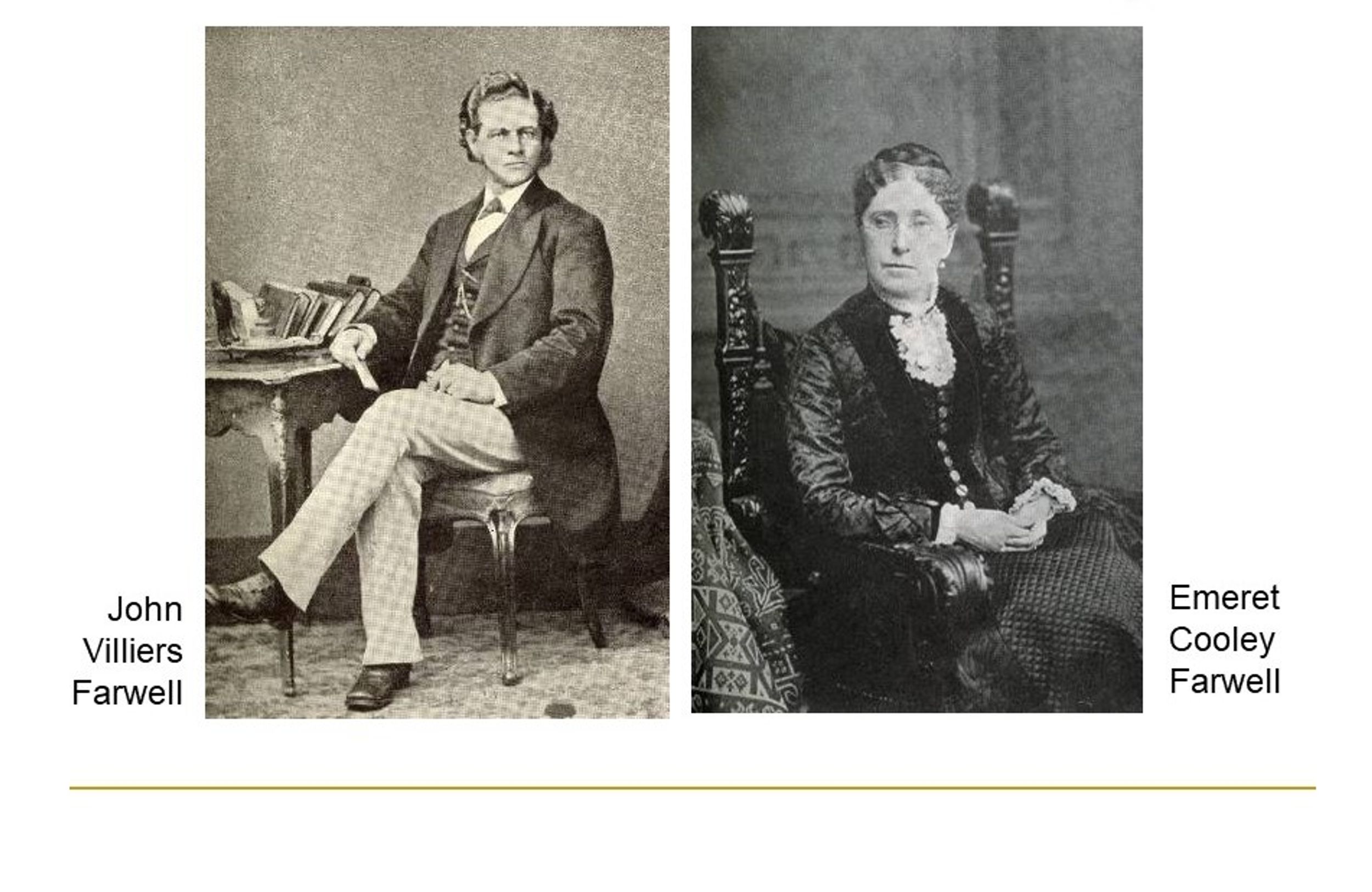
Quickly, though, he found a new one: he began to climb the ladder clerking in the dry-goods business; by 1850 he was admitted to partnership, and shortly the sister of his partner, Emeret Cooley, became his second wife. By 1865 he had taken over the wholesale firm as J.V. Farwell and Company – Marshall Field received his training under Farwell’s supervision. J.V. Farwell’s forward-thinking in building an extra-large warehouse meant that his firm was well-equipped to supply the troops during the Civil War, leaving him in an enviable position afterward. By 1881, the Chicago Tribune called J. V. Farwell and Company one of the leading factors in the trade of the West, adding that “There is not a house whose members have done so much in building up and beautifying Chicago.” J.V. Farwell was also prominent in religious circles, a leading spirit in the development of the YMCA in Chicago – this may have led him to become, along with his brother Charles, one of the original shareholders in the Lake Forest Association in 1857.
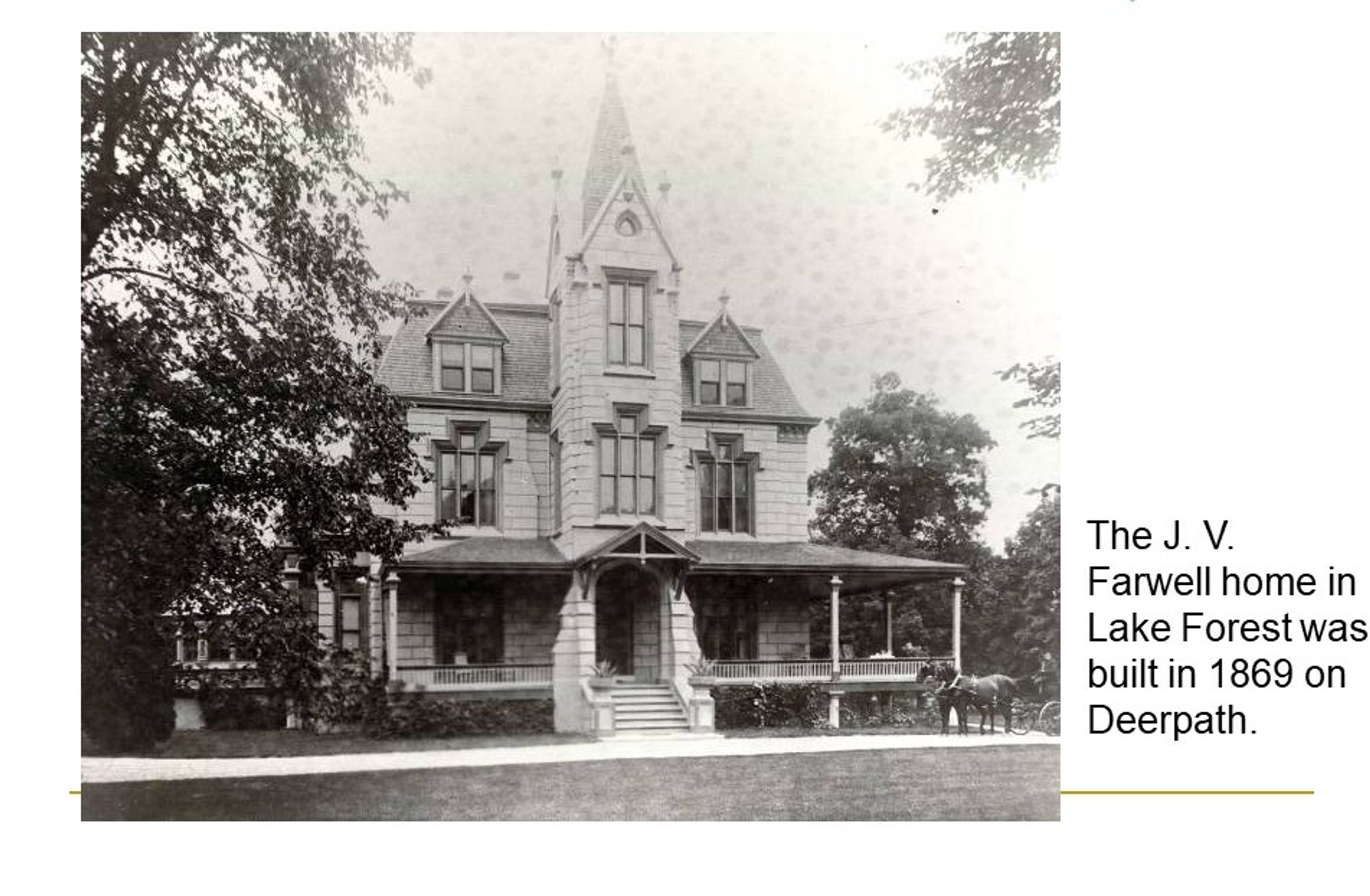
J. V. Farwell’s Lake Forest home, built in 1869, was the first American country house to be built largely with Portland cement. Both cement and contractor, Leonard Double, had been imported from England. One difficulty posed by the building material became clear only later, when the family struggled to have the house wired for electricity.
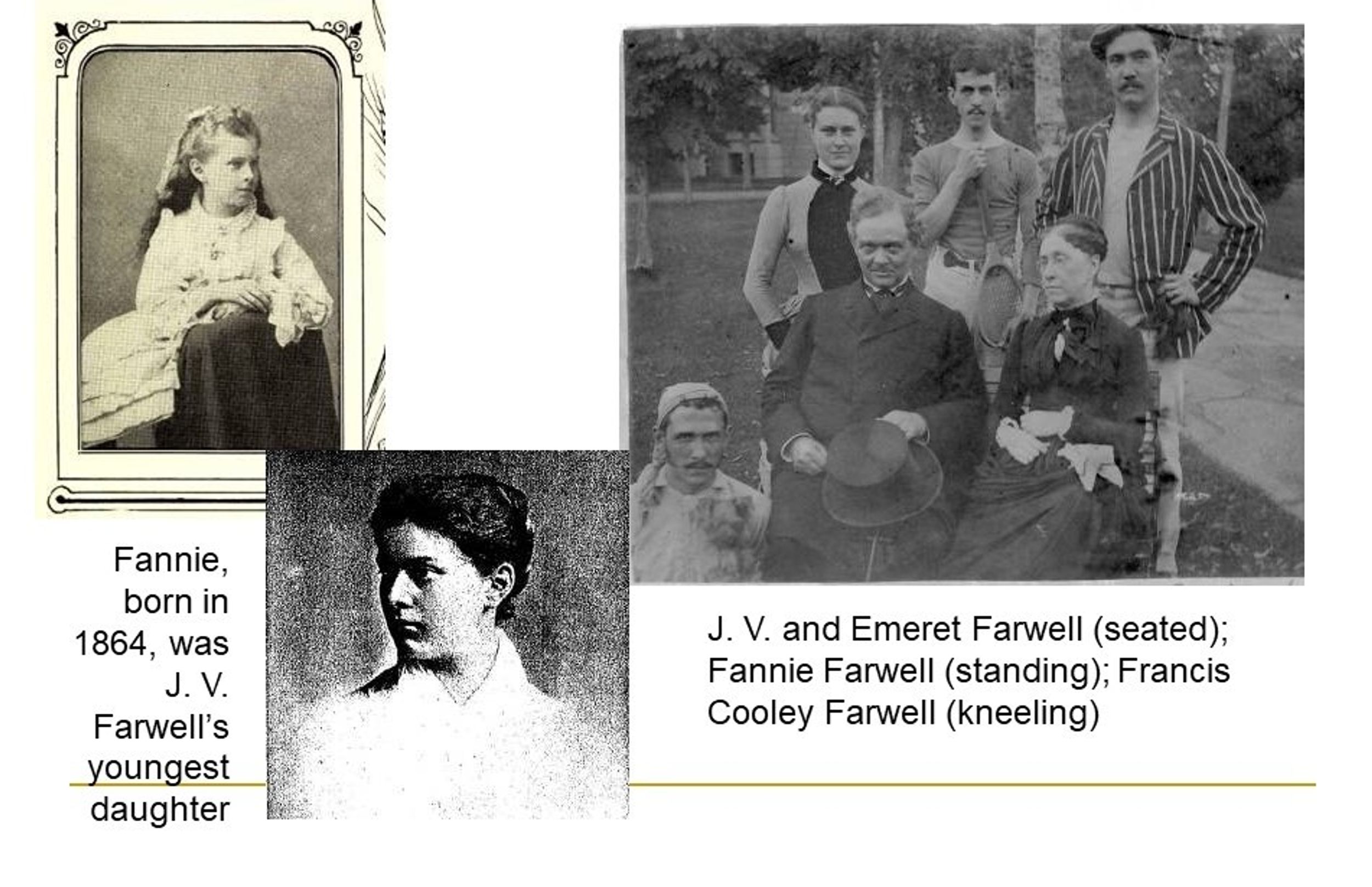
J.V. Farwell had five children; Fannie, the youngest, was born in 1864. The Farwell children grew up spending summers in Lake Forest, a relatively small college town before the population grew at the turn of the century, where the family attended the First Presbyterian Church. A relative recalled that once at the Wednesday night prayer service, shortly before Fannie and her cousin Grace took a trip abroad, church elder Samuel Dexter Ward included the two girls in his prayers: he prayed that “his two young friends who were going to Paris to school, might return safely and uncontaminated.”
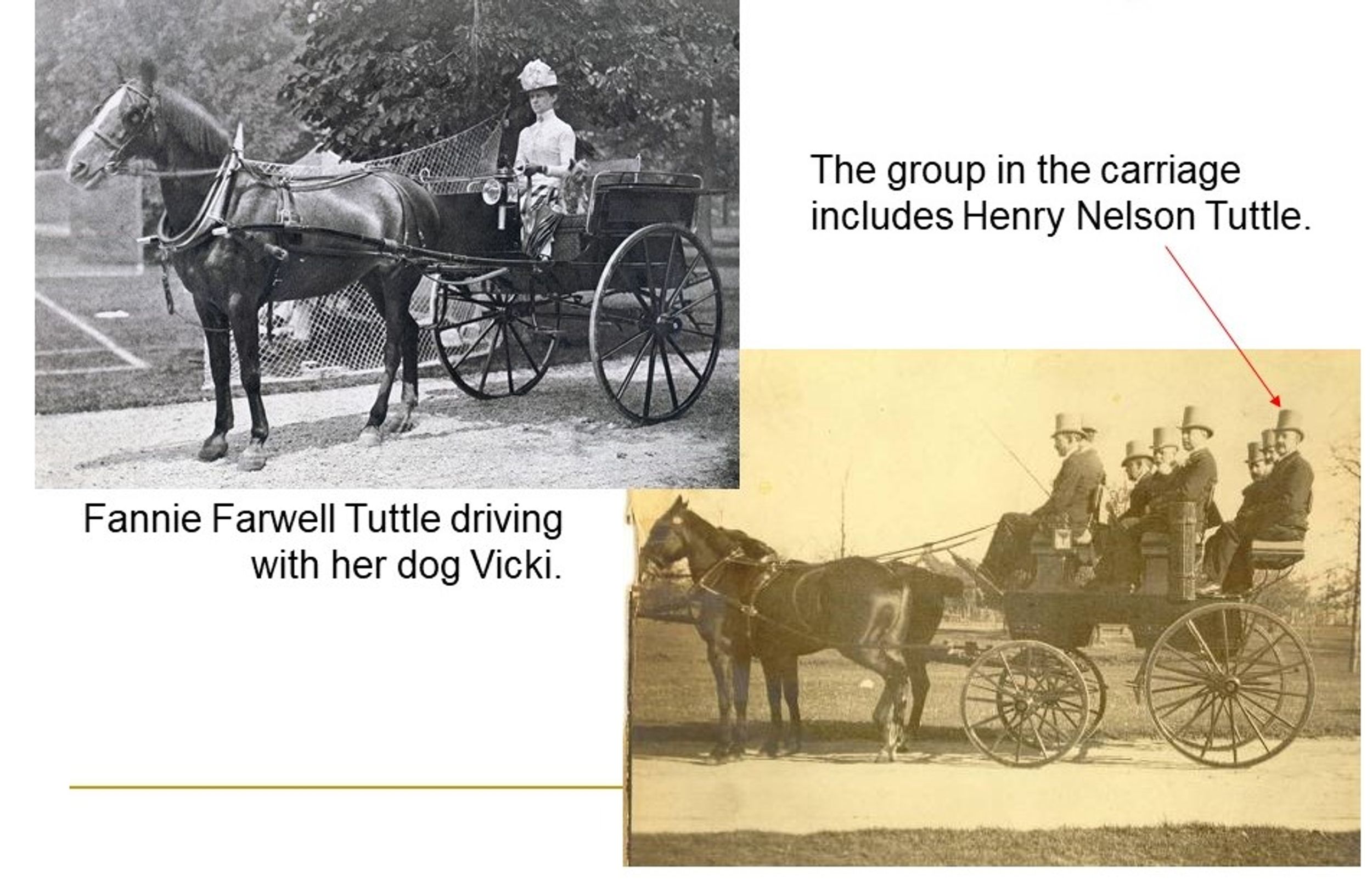
Back from Paris safe and sound, Fannie Farwell married Henry Nelson Tuttle, a well-known Chicago attorney, in 1888. They inaugurated the family tradition of building on the original, large J.V. Farwell tract of land when their home near the corner of Lake and Westminster was built in 1891 – it still stands as one of the oldest surviving homes so close to the shore in Lake Forest.
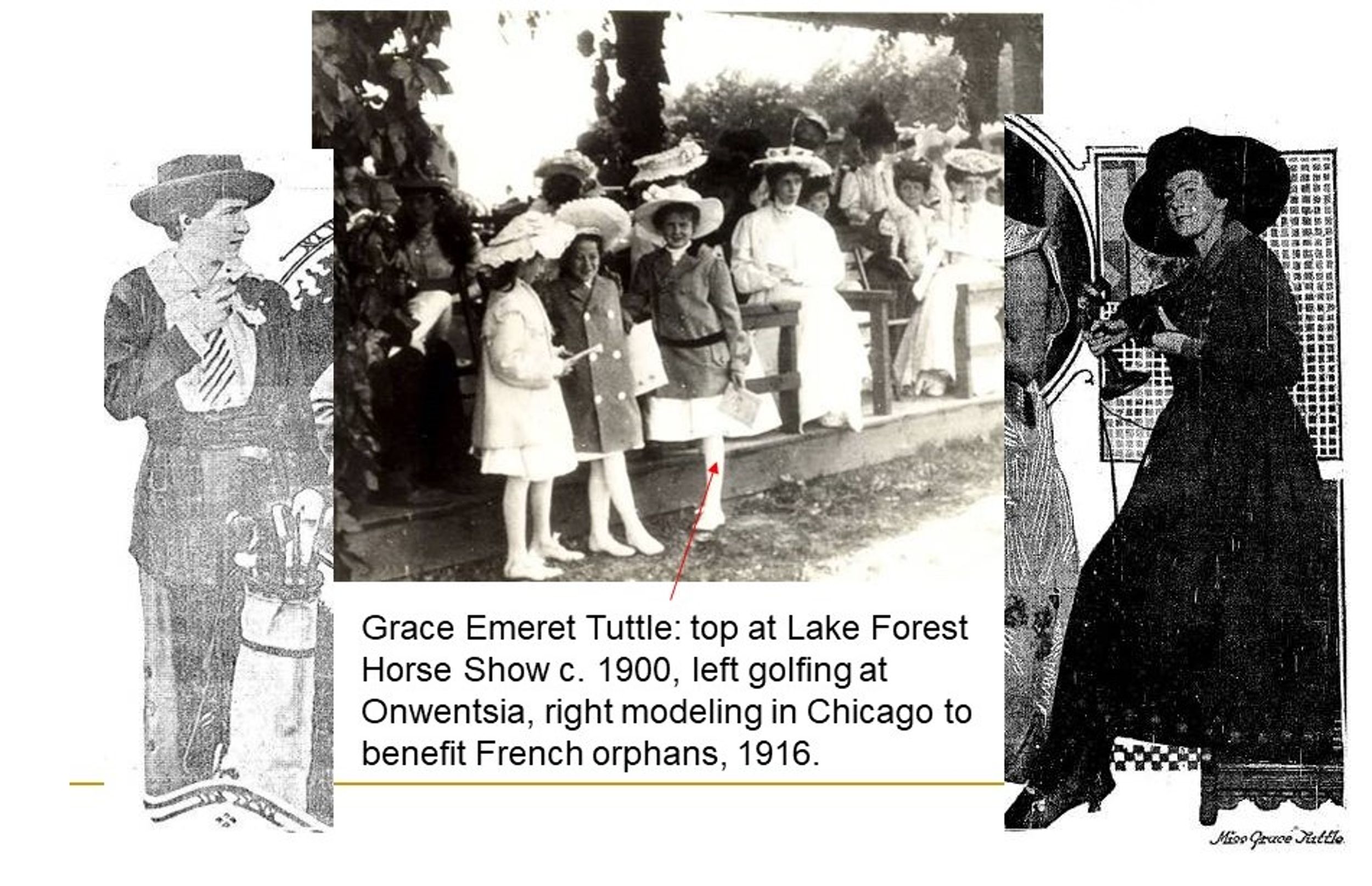
The Tuttles had three children – Grace Emeret Tuttle, born in 1895, was the youngest. She was an accomplished tennis player and golfer, winning the women’s championship at Onwentsia in 1932. During World War I, she and the rest of the “Dozen Debutantes,” as they were called, served their country in several ways, from modeling imported gowns for the benefit of French war orphans, to attending a Red Cross nursing course and serving with the Draft Board. (These skills came in handy later in life, when Grace volunteered at the Great Lakes Naval Hospital during World War II and later for decades at the Lake Forest Hospital.)
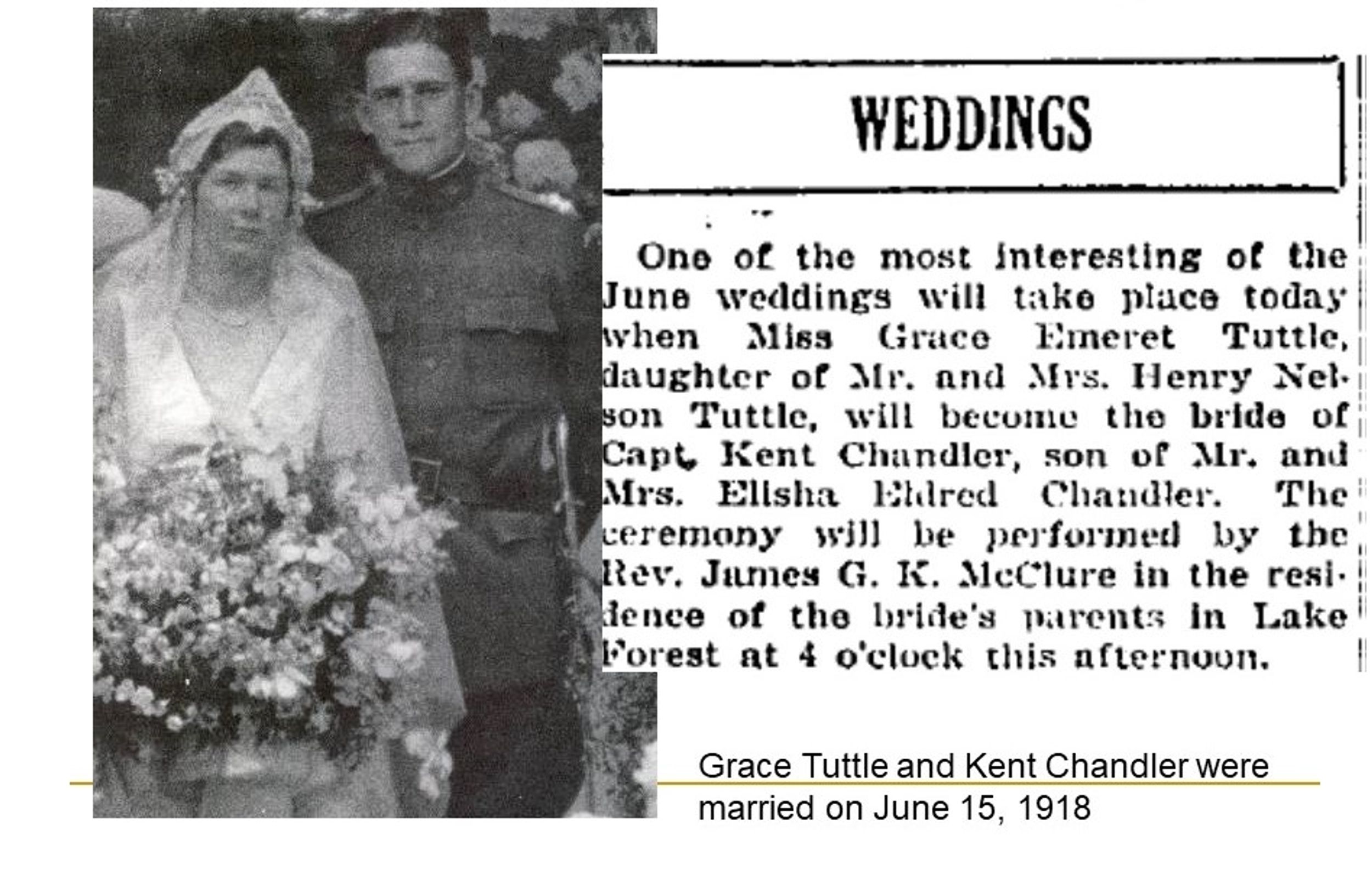
When Grace Tuttle and Kent Chandler were married in 1918, the society pages in the Chicago Tribune gushed about the pair, noting that “the bride-to-be is one of the most popular of the younger girls here, more than usually pretty and chic in appearance. Her young soldier fiancée is tall and also blessed with more than the ordinary allotment of looks.” Kent Chandler shortly left for Europe to serve as a captain in the American Expeditionary Force in World War I.
The Chandler family’s roots in Chicago stemmed back to 1876, when Kent’s father Elisha Eldred Chandler came to Chicago to work with his friend Philip D. Armour – he was an employee of Armour and Company for 53 years. After the war, Kent Chandler went into investment banking before becoming himself an executive at A.B. Dick and Company.
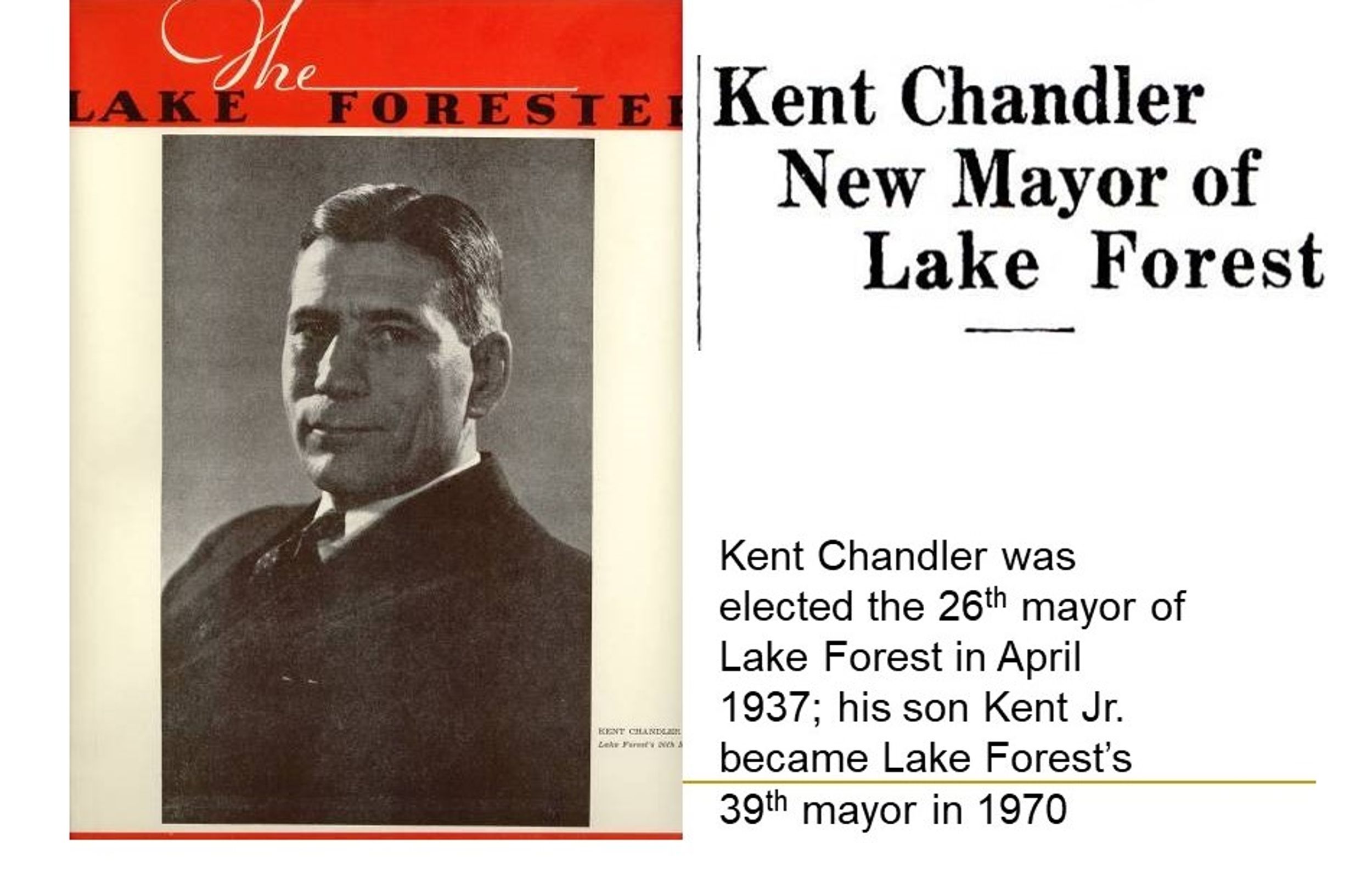
In 1937, Kent Chandler was elected mayor of Lake Forest. He was not the first mayor in the family: his wife’s grandfather J. V. Farwell was mayor in 1871 – and would not be the last: his son Kent Chandler Jr. became mayor in 1970. Other cousins and uncles also took the helm of city leadership as mayors and aldermen, creating a family legacy of service to the community and helping people solve problems.
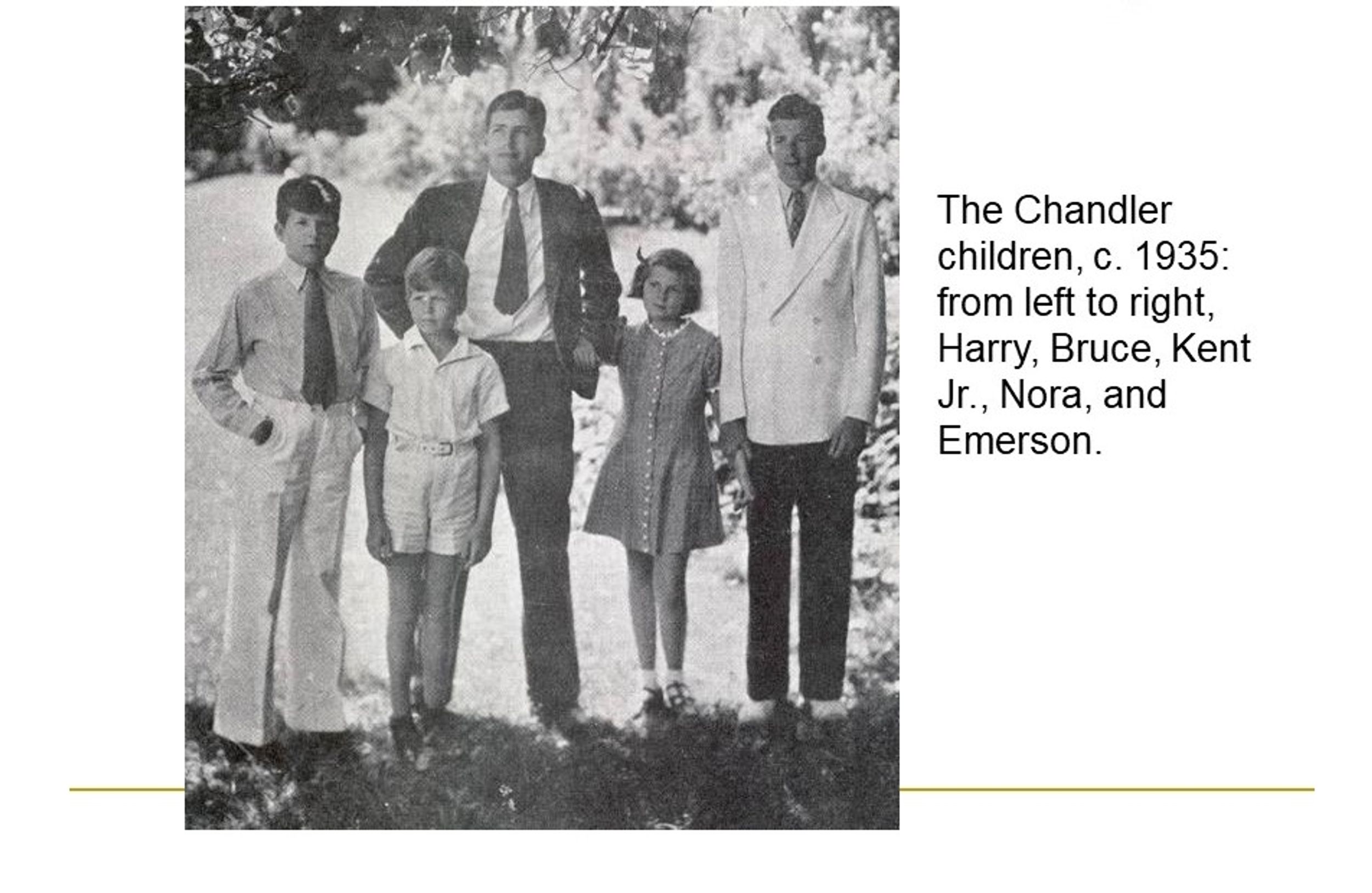
Despite the family’s leadership role in town, Kent Chandler made it clear that there were no shortcuts for his five children, who grew up amongst cousins on Westminster, attended the Bell School, and enjoyed games of father-son baseball in the open space between their homes. When Mayor Chandler got a call one year on July 5th from the city police, saying that his son Emerson was one of the boys that had been caught illegally setting off fireworks, the young Chandler was left to learn his lesson overnight in the police department.
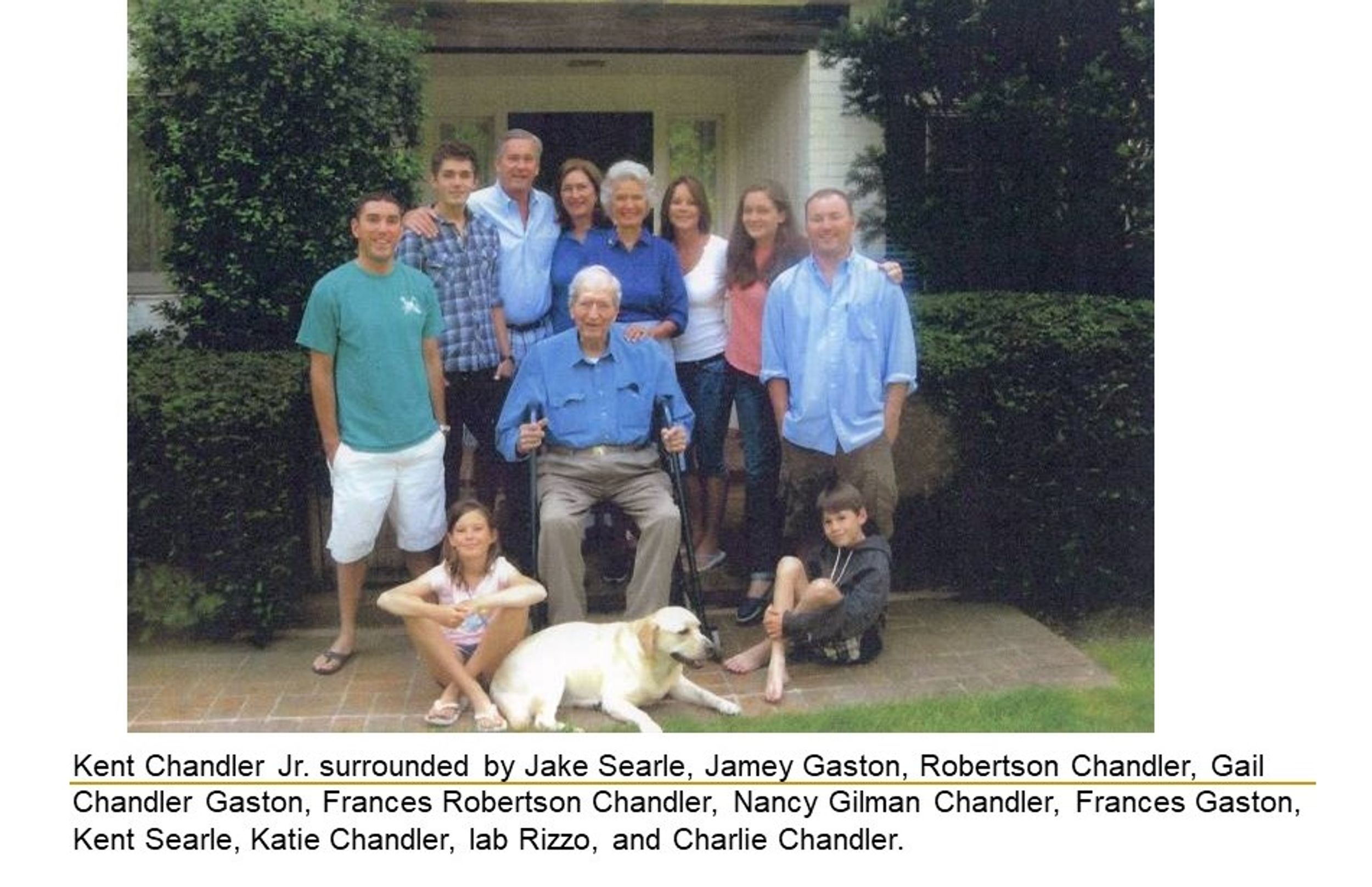
After serving in the 5th Marine Division during WWII, Kent Chandler Jr. met his wife Frances Robertson at one of the many delayed coming out parties after the war – they met at the Onwentsia swimming pool, and then he cut in on her on the dance floor later that evening. They were married in 1948 and survived the test of time, going on to celebrate their 60th wedding anniversary. They built their home on Westminster in 1956 – it is located on the spot where Kent’s parents had planted their World War II victory garden – a location that has certainly proven a good omen.
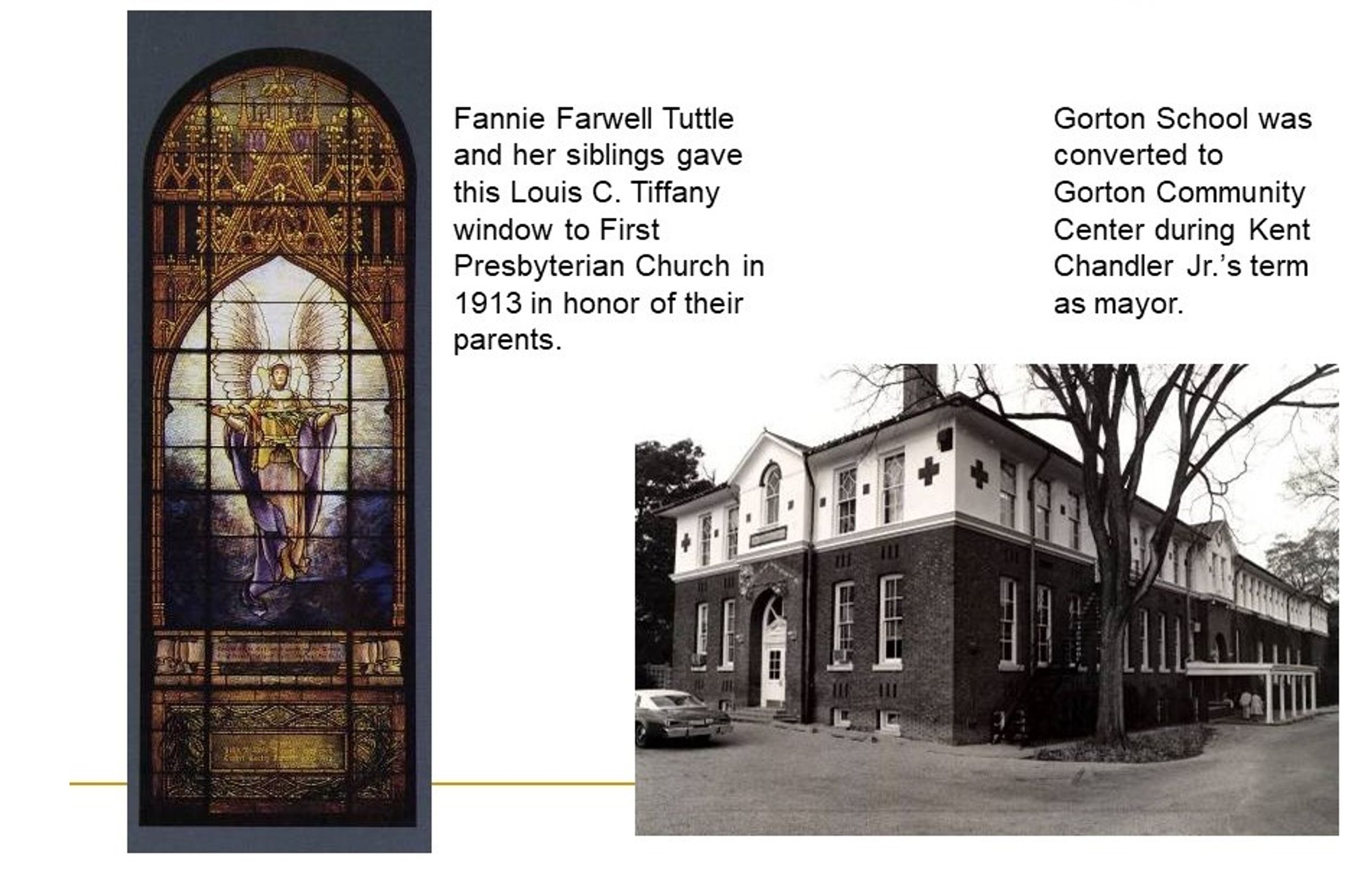
The family has supported countless local organizations over the years, among them First Presbyterian Church, Lake Forest Hospital and Gorton Community Center. Their legacy of service will continue to provide a backbone for Lake Forest in decades to come.